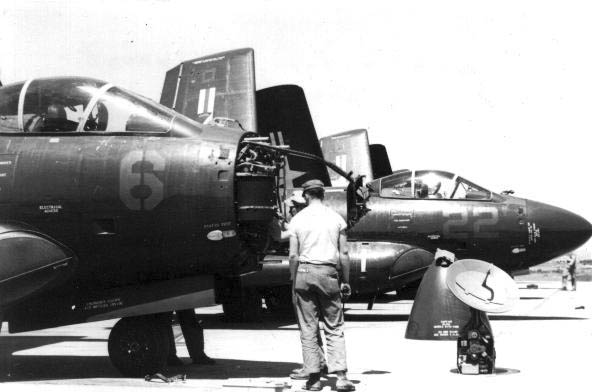U.S. NAVAL AVIATION RESOURCE CENTER > FIGHTERS > PREVIOUS PAGE
Design & Development
Power was provided by two Westinghouse J34 turbojets mounted in the roots of then-standard straight wings of the early jet era. As a night fighter that was not expected to be as agile as smaller daylight fighters; the expectation was to be a stable platform for its radar system and the four 20 mm cannon mounted in the lower fuselage. The U.S. Navy awarded Douglas a contract for three XF3D-1 prototype aircraft on 3 April 1946. (The losing design from Grumman evolved into the F9F Panther.)
The radar system in the F3D-1 was the Westinghouse AN/APQ-35. The AN/APQ-35 was a combination of three different radars, each performing separate functions: an AN/APS-21 search radar, an AN/APG-26 fire control radar, both located in the nose, and an AN/APS-28 tail warning radar. The complexity of this radar system, which was produced before the advent of semi-conductor electronics, required intensive maintenance to keep it operating fully.

Maintenance on the Westinghouse APQ-35 radar of a Douglas F3D-2 Skyknight night fighter of Marine night fighter squadron VMF(N)-513 Flying Nightmares parked at airfield Kunsan in the Summer of 1953. Note APQ-35 standing on the right and the radar housing beyond.
[Source: USN]
Sources:
Wikipedia: Douglas F3D Skyknight
U.S. NAVAL AVIATION RESOURCE CENTER > FIGHTERS > PREVIOUS PAGE
